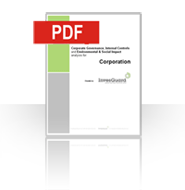March 1st, 2010
Move Over Goldman, Wells is here!
A vigilant reader pointed out that this post had some repeats in a couple of paragraphs.....Wordpress went a little crazy when I tried to insert that table at the end.
My apologies to everyone. The post is now clean.

Sometime back,we covered a post investigating whether financial institutions are rushing to re instate compensation and pay policies now that they were out of the emergency funding program- TARP. There were several companies that we named here that changed their compensation structure including increasing cash salaries for senior executives.
One more that we are adding to that list is Wells Fargo. The changes instituted at Wells affect cash salaries of top executives . These changes have caused their cash salaries to jump so steeply that it could potentially eclipse any compensation issues that ‘all-time-poster-boy-for-excessive- compensation’- Goldman Sachs may appear to have.
On February 26th, the Board Compensation Committee (or Human Resources Committee as it is called over at Wells), made some changes to the compensation structure of its top executives. These executives are now to be paid their full salaries in cash versus being paid partly in the form of company stock which was the erstwhile compensation structure under Wells Fargo’s Long Term Incentive Compensation Plan.
Back in August 2009, salaries of these executives were increased to reflect an increased percentage of remuneration in company stock , but the cash portion of their salaries remained unchanged.
Wells Fargo repaid the entire amount it had borrowed under the Government’s TARP program in December 2009. Following this repayment, the Board Compensation committee of Wells Fargo increased the base salaries of the same senior executives yet again but this time the increased salaries will be paid entirely in cash with no stock component. These changes will be effective March 2010.
From the table below, it is painfully obvious that cash salaries for these executives have significantly jumped. John Stumpf, Chairman and CEO has seen his cash salary jump from $900,000 to $2,800,000 as was the case for Mark Oman(Senior Executive Vice President and head of Home and Consumer Finance), who had announced his retirement from Wells Fargo at the end of 2009. Not only does he continue with the company, but he also received a bump of $1,400,000 in his cash salary which takes his total cash salary to $2,000,000. As everyone knows, increments for middle to lower rung managers and staff are frozen at most companies with maximum salary increases of 2% to 3%. How does one justify this kind of salary hike of more than a 100%?
On the other hand, Wells shares have languished around $25- $27 a share. Wells Fargo closed at $27.34 a share on 2/26/2010. It looks like popular backlash against excessive compensation as well as the threat of regulation have not deterred Wells’ Board from rewarding executives for what appears to be an execution of their usual and not any kind of ‘above and beyond’ type of job responsibilities. With all the public attention on Goldman officers and their compensation, salary changes at other financial institutions seem to be going unnoticed under the radar.

Tags: bankers pay, under the radar pay jumps





